
9850194690
contact usRCT can be completed in single visit with the help of advanced technology & armamentarium.
Advantages of single sitting RCT: -
★ The main advantage is that you don’t have to take out time for multiple sittings
rather the treatment can be completed in a single day itself.
★ There is no difference in the treatment cost of single sitting root canal when
compared with multiple sitting.
★ The best part is that patient will not be injected with the local anesthesia
again and again.
★ Single sitting appointments are more comfortable to the patient and saves time.
After a Root canal procedure, some teeth may not heal as expected, or may develop a new infection, necessitating another RCT.
The usual reasons for Re-RCT: -
★ Some inadequacy in initial RCT
★ New infection may develop due to decay, loose/cracked/broken crown, or fracture
in a tooth
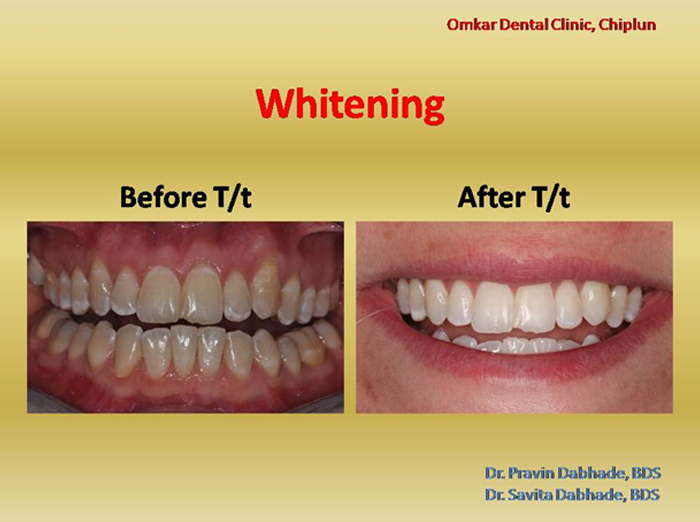
A chemical application with a peroxide base is applied directly to the teeth to remove minor staining and discoloration.
Proclinated/Mal-aligned teeth are fixed & and set them in the right place.
This can be achieved with the help of
★ Clear Aligners
★ Ceramic Brackets (Tooth colored)
★ Self Ligating Brackets
★ Metal Brackets
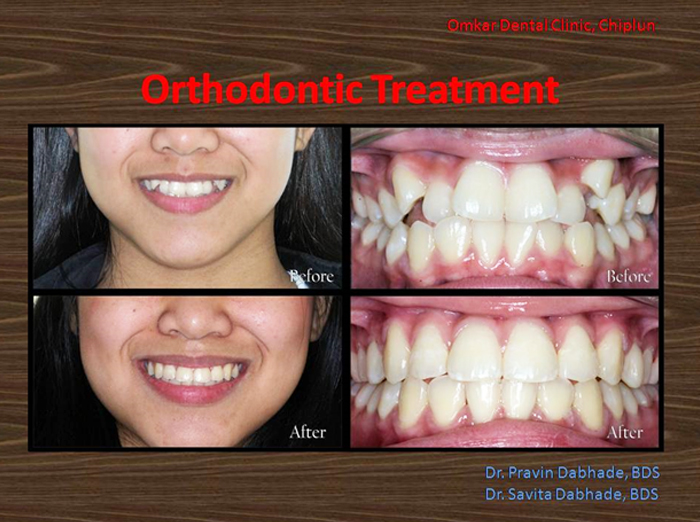
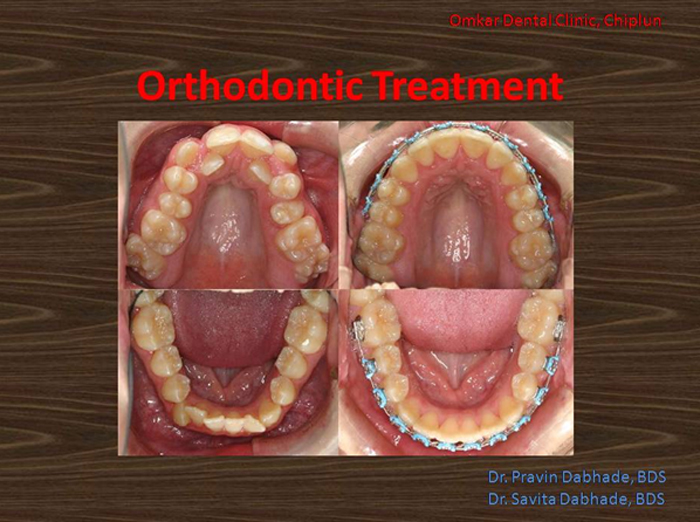
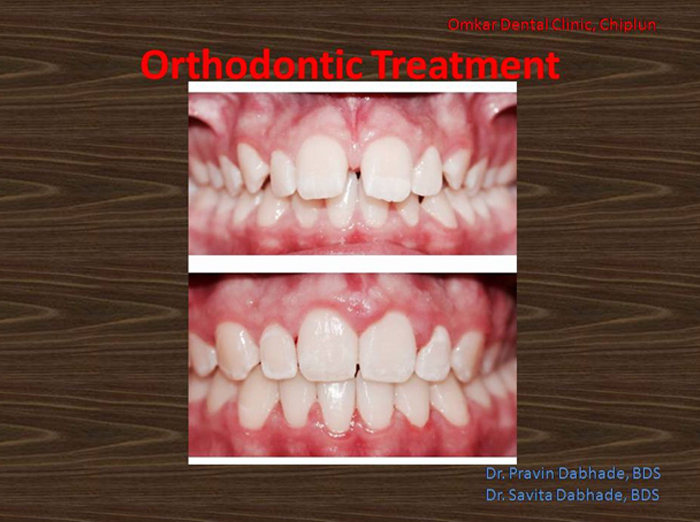
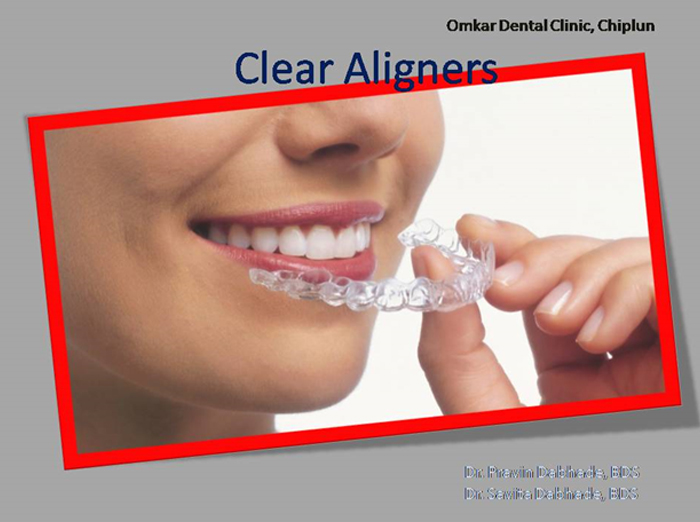
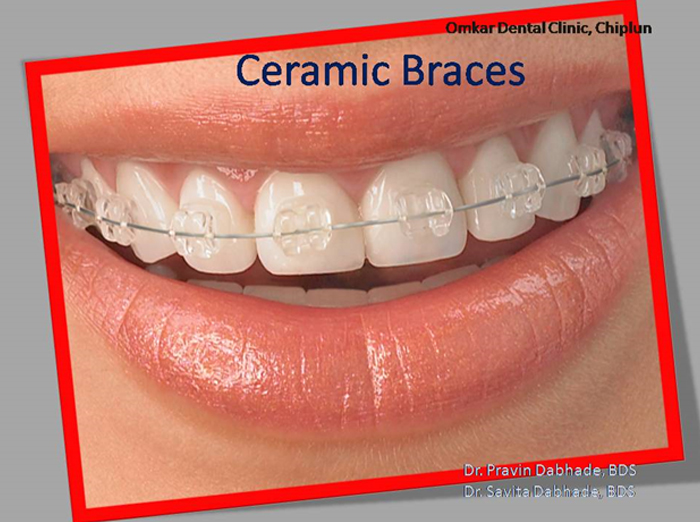
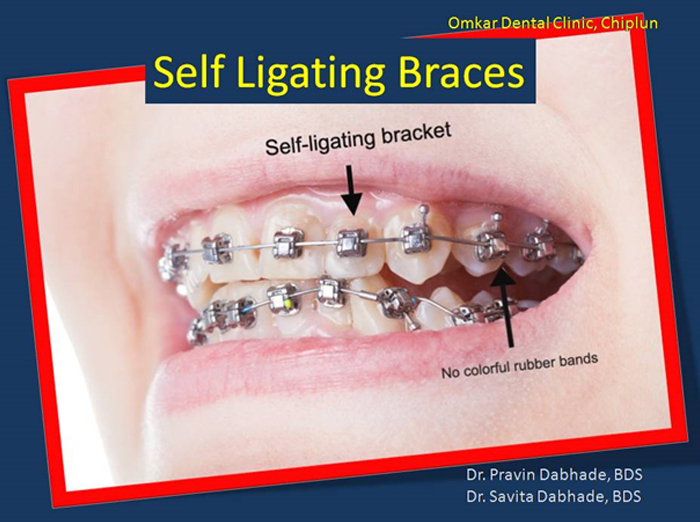
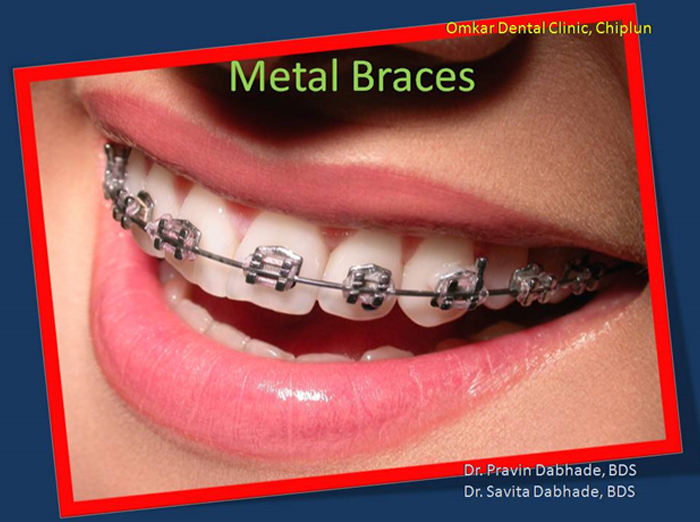
It’s a Removable Complete Denture which is supported by one or more remaining natural teeth, the roots of natural teeth or dental implants.
It is usually used in the patients who have only a few healthy teeth left in the mouth.
The advantage of over denture is that it helps prevent bone loss.
It also provides better stability to the dentures, hence improving Chewing capacity, confidence & pleasure of the patient.
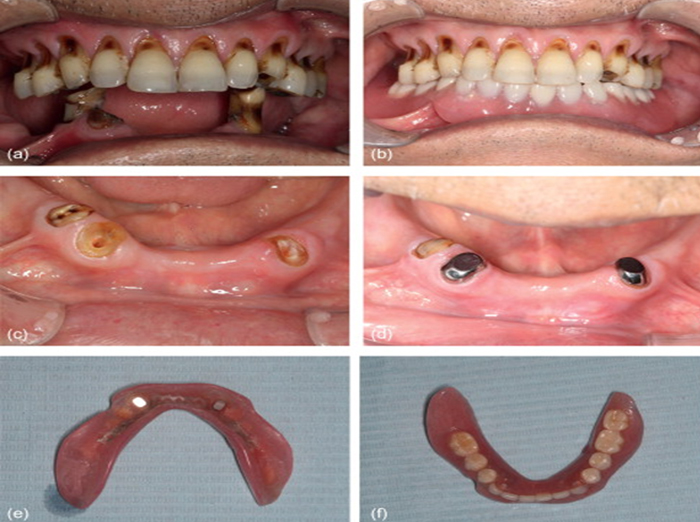

What are dental Implants?
Dental Implants are small, sturdy screw like posts, made up of highly bio-compatible, titanium material; those are surgically inserted into the jaw bone underneath the gums.
They perfectly integrate with jaw bone & act as permanent artificial tooth root structures, to support single/multiple teeth replacement. Different studies show that, the success rate of Dental Implants is above 99%.
Why Dental Implants? ➢ They look, feel & function like natural teeth, restoring ability to chew. ➢ Are permanent, reliable & designed to last for many years. ➢ Prevent bone loss & gum recession, hence adjacent teeth. ➢ Give excellent aesthetic appearance, restoring natural smile. ➢ Very easy to maintain & clean. Just like natural teeth. ➢ Improve comfort & Confidence.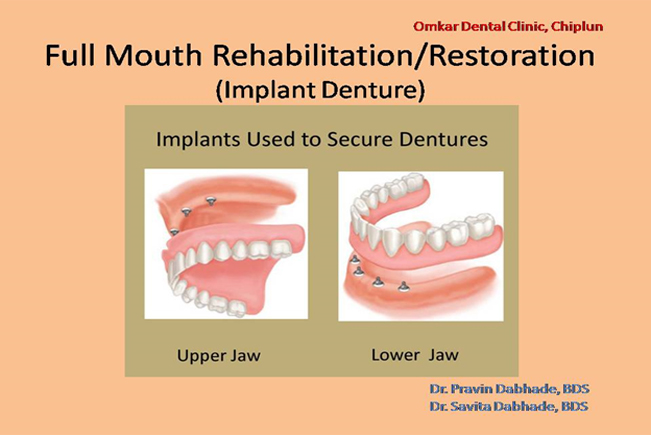
Removable complete dentures can be anchored by 2 or more Implants.Implants provide excellent stability to the denture, hence far more convenient to use.
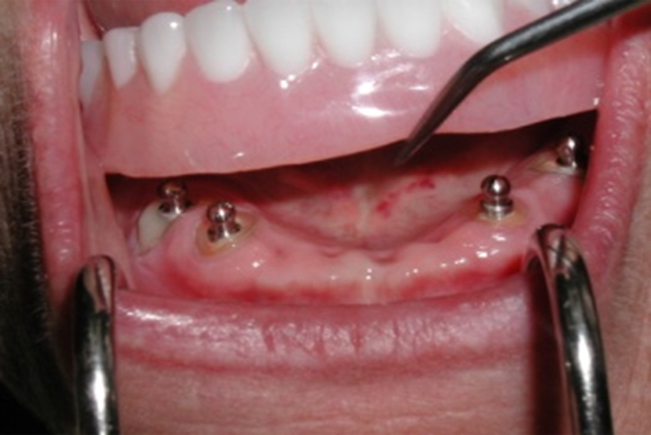
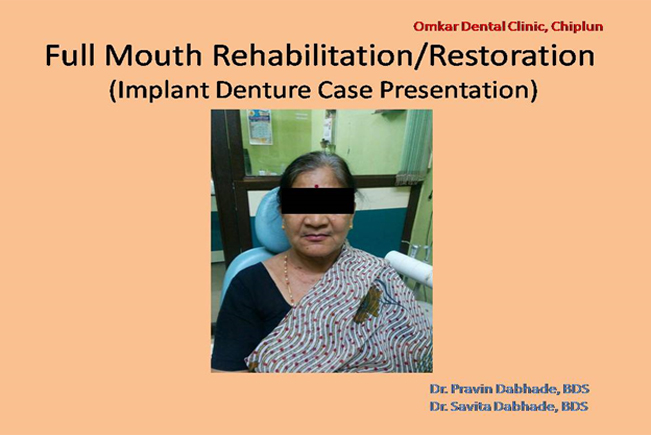
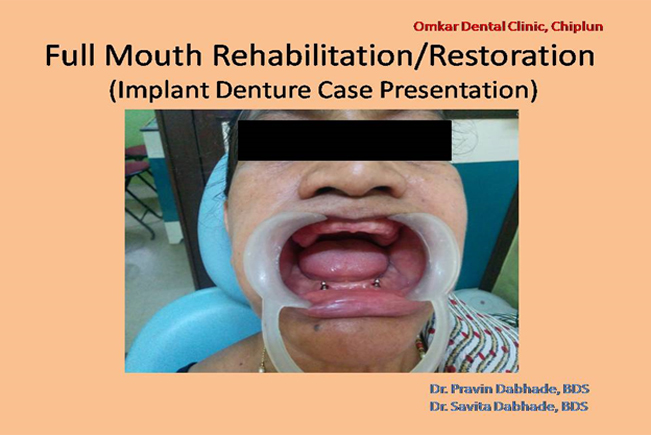
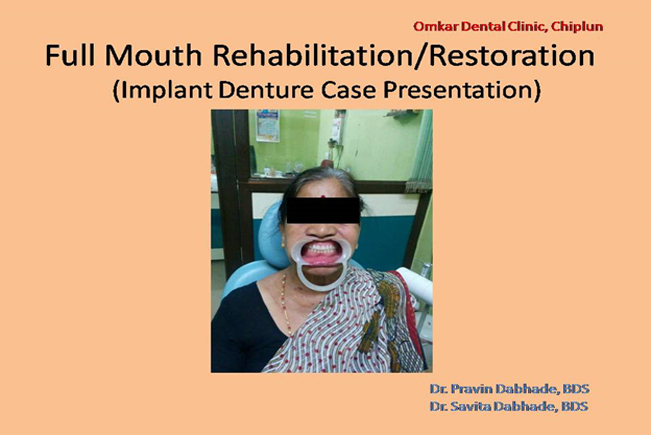
In edentulous (teeth-less) patients, multiple (4/6 or more) Implants are placed & crown/bridges fixed over it, to achieve full mouth restoration with permanent fixed teeth.
It restores natural looks, enhancing confidence
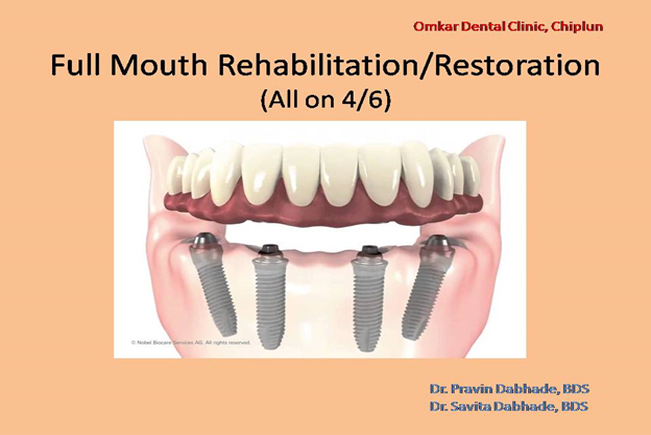
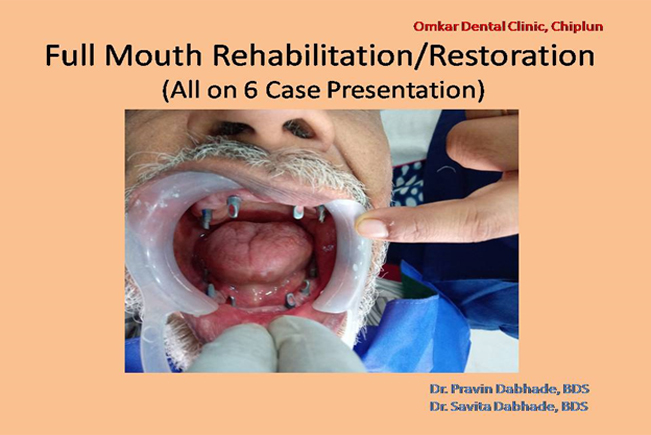
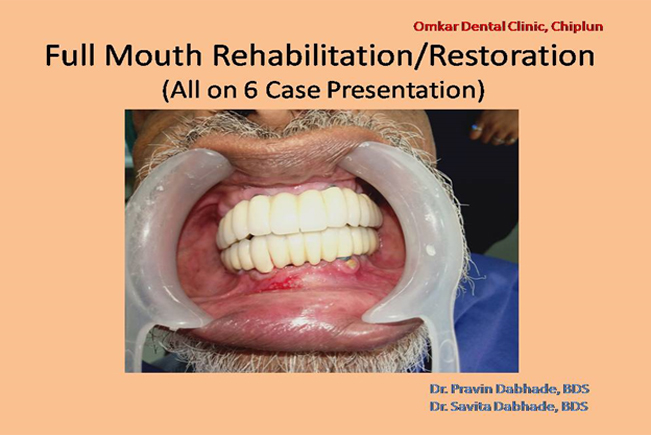

Everyone deserve a beautiful smile, here we are...
It is the art & science to create beautiful smiles, through various measures as:-
➢ There is SO MUCH to organize in a wedding, but nothing is more important than having a FRESH BREATH with RADIANT SMILE
➢ Nothing is more stunning than a beautiful couple with a beautiful smile. Your smile on your wedding day is almost as important as the dress. We all want to look our best at our wedding. On your Wedding Day, all eyes will be upon you. You may never be photographed more than on this day. You’ll be looking at it in photos for years to come. We want to ensure you have a bright, beautiful smile!
➢ A teeth cleaning, dental whitening, a simple contour and tooth reshape can help you look your best for that special day. So you’ll need to find an expert who knows smiles better than anyone. We have the expertise to create a perfect smile for you and your wedding with beautiful straight white teeth. We can help you on your big day as perfect as you’ve always dreamed it would be.
➢ So, when making appointments for dress alterations, floral arrangements and reception details, we suggest that you schedule a dental visit too. New and improved smiles don’t happen overnight. Schedule a thorough check-up at least three months before your wedding.


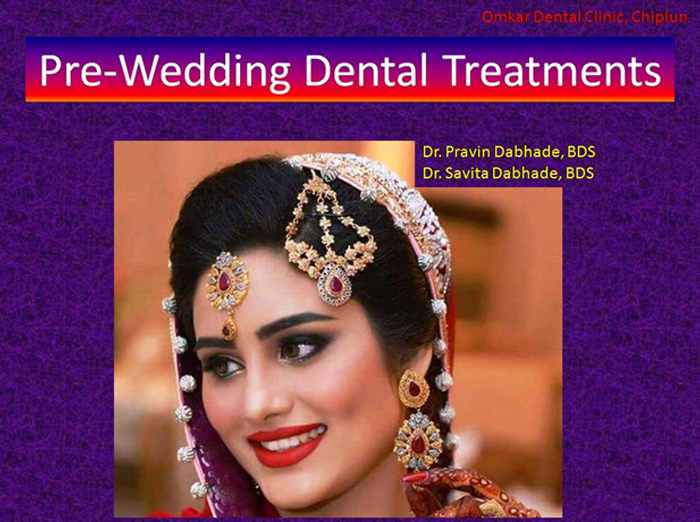
There are people who have dental problems throughout their mouths. These patients may exhibit multiple missing teeth, numerous teeth with large fillings that are failing or exhibiting decay, cracked or broken teeth, or badly worn teeth.
They are treated comprehensively with a vision of a final result that improves both function and esthetics.
The treatment involves a combined use of multiple options such as crowns, bridges, veneers, dental implants and/or dentures
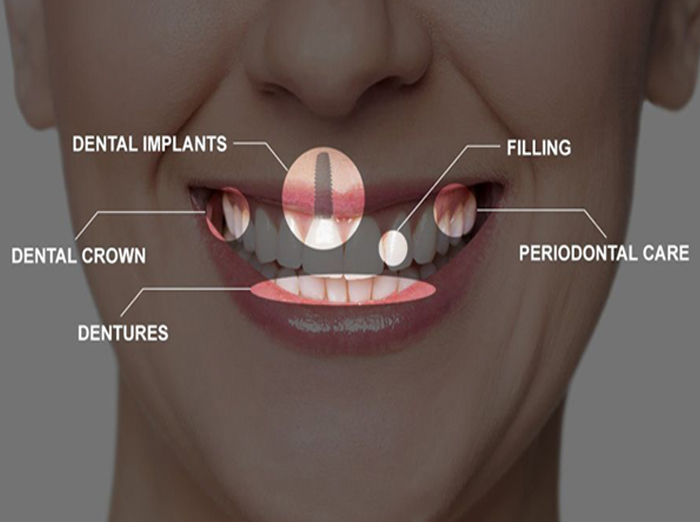
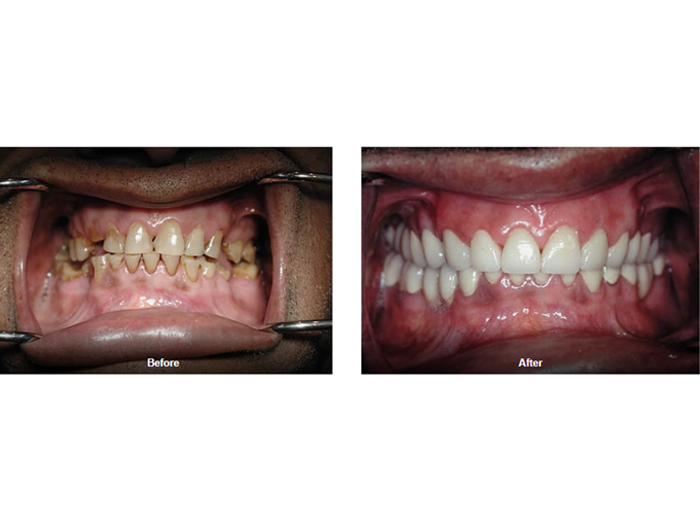
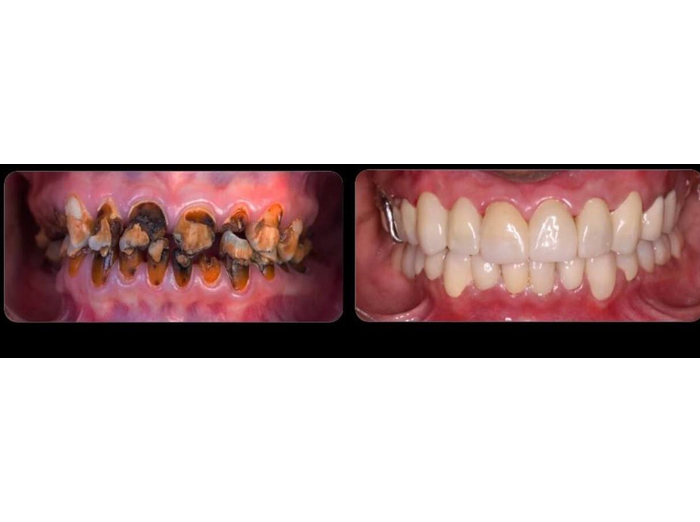
Gum (Periodontal) Diseases are prevalent in around 80% population. The disease is almost
neglected in its initial phase as it is painless most of the time. Here is the list of
signs to identify the disease. If you find any sign from the list, you need a treatment
:-
• Swollen or puffy gums
• Bright red, dusky red or purplish gums
• Gums that feel tender when touched
• Gums that bleed easily
• Pink-tinged toothbrush after brushing
• Spitting out blood when brushing or flossing your teeth
• Bad breath
• Pus between your teeth and gums
• Loose teeth or loss of teeth
• Painful chewing
• New spaces developing between your teeth
• Gums that pull away from your teeth (recede), making your teeth look longer than
normal
• A change in the way your teeth fit together when you bite
What Causes Gum Disease ?
• Poor Oral Hygiene is the main culprit
• Bad habits such as Gutakha, Tobacco, Smoking, Beetle nut, Excessive consumption of
carbonated drinks, sweets, chocolates, etc.
• Diabetes
• Illness
• Some medications
• Genetics
What is the treatment ?
It disease depends on the stage of disease.
It mainly comprises of -
1. Non-surgical Treatments
2. Surgical Treatments
Non-surgical Treatments for Gum Disease
Dental braces (also known as braces, orthodontic cases, or cases) are devices used in orthodontics that align and straighten teeth and help to position them with regard to a person's bite, while also working to improve dental health. They are often used to correct underbites, as well as malocclusions, overbites, open bites, deep bites, cross bites, crooked teeth, and various other flaws of the teeth and jaw. Braces can be either cosmetic or structural. Dental braces are often used in conjunction with other orthodontic appliances to help widen the palate or jaws and to otherwise assist in shaping the teeth and jaws.
It’s the general servicing of your gums & teeth.
It is the first line of Prevention against gum diseases, dental caries & other oral diseases, alongside ‘Routine Dental Check-Up’.
Often Plaque and Tartar accumulate in your teeth and gum line. It will not be cleaned by normal brushing or flossing. We use ultrasonic devices to remove these deposits, to make your teeth & gums clean.
Your oral Health has a lot of Impact on your General Health
Omkar Dental Clinic advice getting it done twice a year.
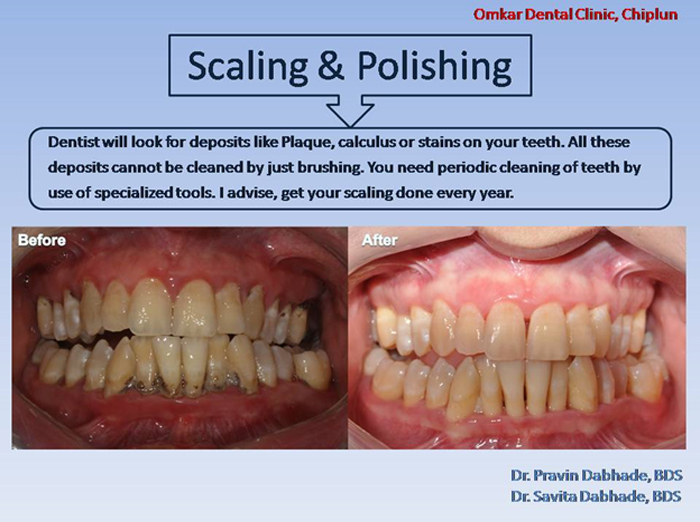
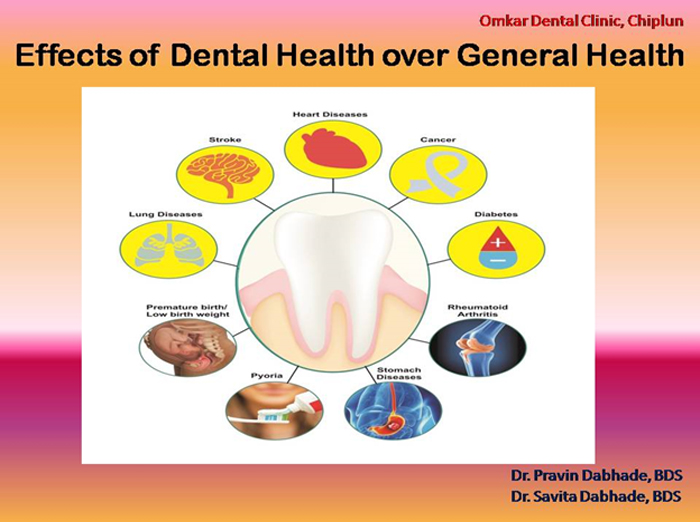
This is a deep-cleaning, done under a local anesthetic, whereby plaque and tartar from above and below the gum line are scraped away (scaling) and rough spots on the tooth root are made smooth (planing).
➨ Flap Surgery/Pocket Reduction Surgery
During this procedure the gums are lifted back exposing the roots for more effective
scaling and root planing. In some cases, irregular surfaces of the damaged bone are
smoothed and/or recontoured. The gums are then placed so that the tissue fits snugly
around the tooth. This method reduces the size of the space between the gum and tooth,
thereby decreasing the areas where harmful bacteria can grow and decreasing the chance
of serious health problems associated with periodontal disease. After healing, it's
easier to clean these areas and maintain healthy gum tissue.
➨ Bone Grafts
This procedure involves using fragments of your own bone, synthetic bone, or donated
bone to replace bone destroyed by gum disease. The grafts serve as a platform for the
regrowth of bone, which restores stability to teeth.
➨ Soft Tissue Grafts
This procedure reinforces thin gums or fills in places where gums have receded. Grafted
tissue, most often taken from the roof of the mouth (Palate), is stitched in place,
adding tissue to the affected area. This can help reduce further gum recession, cover
exposed roots and give your teeth a more pleasing appearance.
➨ Guided Tissue Regeneration
Performed when the bone supporting your teeth has been destroyed, this procedure
stimulates bone and gum tissue growth. Done in combination with flap surgery, a small
piece of mesh-like fabric is inserted between the bone and gum tissue. This keeps the
gum tissue from growing into the area where the bone should be, allowing the bone and
connective tissue to regrow to better support the teeth.
➨ Bone Surgery
It’s smoothening of the shallow craters in the bone due to moderate and advanced bone
loss. Following flap surgery, the bone around the tooth is reshaped to decrease the
craters. This makes it harder for bacteria to collect and grow.
During the procedure, excess gum and bone tissue is reshaped to expose more of the natural tooth.
Indications are
• A cavity in tooth having the margins below gingival line

• Insufficient height of tooth, to hold crown
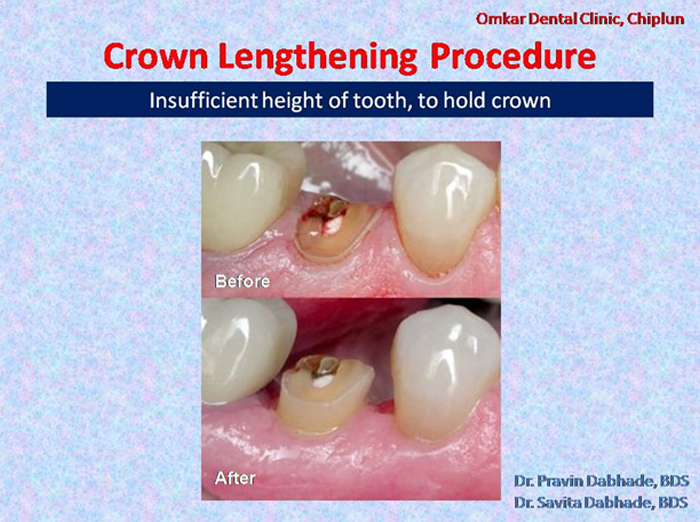
• Gummy smile

Frenectomy is the complete removal of the frenum, including its attachment to the underlying bone, while Frenotomy is the incision and the relocation of the frenal attachment.
Indications are
• Orthodontic treatments
• Speech Problem due to tongue tie
➨ Flap Surgery/Pocket Reduction Surgery
During this procedure the gums are lifted back exposing the roots for more effective
scaling and root planing. In some cases, irregular surfaces of the damaged bone are
smoothed and/or recontoured. The gums are then placed so that the tissue fits snugly
around the tooth. This method reduces the size of the space between the gum and tooth,
thereby decreasing the areas where harmful bacteria can grow and decreasing the chance
of serious health problems associated with periodontal disease. After healing, it's
easier to clean these areas and maintain healthy gum tissue.
➨ Bone Grafts
This procedure involves using fragments of your own bone, synthetic bone, or donated
bone to replace bone destroyed by gum disease. The grafts serve as a platform for the
regrowth of bone, which restores stability to teeth.
➨ Soft Tissue Grafts
This procedure reinforces thin gums or fills in places where gums have receded. Grafted
tissue, most often taken from the roof of the mouth (Palate), is stitched in place,
adding tissue to the affected area. This can help reduce further gum recession, cover
exposed roots and give your teeth a more pleasing appearance.
➨ Guided Tissue Regeneration
Performed when the bone supporting your teeth has been destroyed, this procedure
stimulates bone and gum tissue growth. Done in combination with flap surgery, a small
piece of mesh-like fabric is inserted between the bone and gum tissue. This keeps the
gum tissue from growing into the area where the bone should be, allowing the bone and
connective tissue to regrow to better support the teeth.
➨ Bone Surgery
It’s smoothening of the shallow craters in the bone due to moderate and advanced bone
loss. Following flap surgery, the bone around the tooth is reshaped to decrease the
craters. This makes it harder for bacteria to collect and grow.
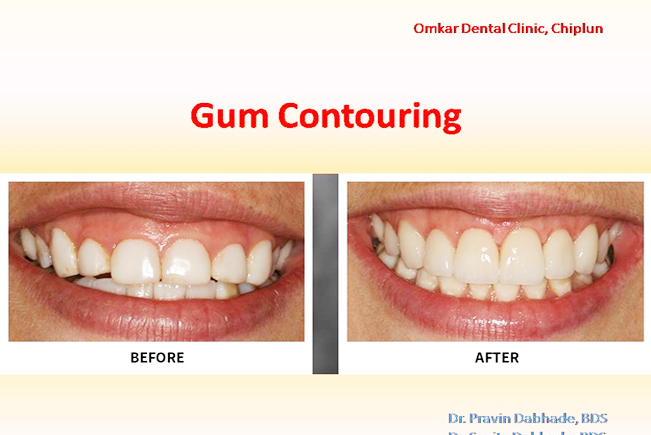
A minor surgical procedure, altering the position of the gum tissue and sometimes the underlining bone, to improve the look and regularity of the gingival line around the teeth.

It is a periodontal plastic surgical procedure, whereby the hyper-pigmentation (Dark/black gums) is removed or reduced by various techniques.
Surgical dental extraction involves the removal of teeth that are not easily accessible inside the mouth and cannot be pulled out using Elevators & forceps.
Indications are
• If a tooth breaks off during the procedure
• Fully/Partially Impacted Wisdom teeth
• Broken-down teeth
• Teeth with long-curved roots
The procedure involves cutting the gum, bone or tooth. Sometimes it may require cutting more any two or all the three of them.
Though it is a bit complex procedure, no worries as you are at expert’s hand with latest technology advances. At Omkar Dental Clinic, your comfort and safety will be ensured.
Wisdom teeth, or third molars, are the last permanent teeth to appear (erupt) in the mouth. These teeth usually appear between the ages of 17 and 25. Some people never develop wisdom teeth. In some people, they erupt normally and cause no problems.
In many people these teeth don't have enough room to erupt into the mouth or develop normally. Wisdom teeth may erupt only partially or not at all. They are called Partially/Fully Impacted teeth.
The impacted teeth mostly cause some problem to the patient such as
• Pain
• Trapping food and debris
• Infection or gum disease (Pericoronitis)
• Tooth decay in a partially erupted wisdom tooth
• Damage to a nearby tooth, Cheek or surrounding bone
When the wisdom tooth troubles the patient, it has to be removed; is a worldwide accepted standard protocol.
Fracture of upper or lower jaw bone is treated by means of bone plate &/or IMF
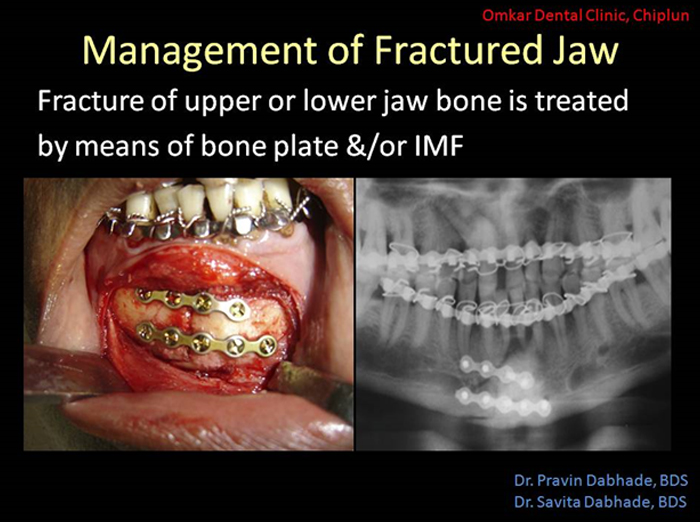
THIS IS THE NEW ORAL FASHION STATEMENT.
A Brilliant way to add a sparkle to your Smile and stand out in the crowd is TOOTH JEWELRY.
You can now have a tooth jewelry in gold and diamonds that adds shining/style on your teeth.
Tooth jewelry is available in different colors, shapes and sizes.
It is a temporary, painless procedure and does not involve any invasive treatment on the tooth.
The jewel does not damage the tissues/tooth and has no side effects except increasing your smile!
FACTS ABOUT TOOTH JEWELRY:
• It is non – invasive and painless.
• Requires no extra maintenance.
• Can be removed and replaced anytime has no effect on tooth enamel once the jewel is
removed or replaced.
• Involves a procedure that only takes about 10 to 15 minutes and is 100% reversible.
• It is stain resistant.
• Does not obstruct regular brushing even if using an electric tooth brush.
MAIN FEATURES:
• No drilling
• No holes
• No tooth preparation
• No loss of tooth structure
• Temporary, can be removed anytime.

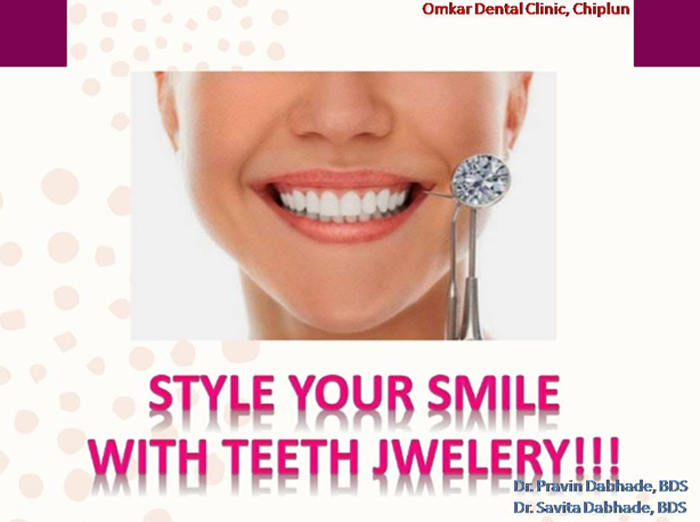

The removal of minute amounts of enamel, the tooth's outer layer, to improve the look of the shape of a tooth.

A thin shell of tooth-colored material, usually porcelain, custom-designed to be affixed to the front surface of the teeth.
Generally most of the dental procedures are carried out using Local Anesthesia only.
Sometimes General Anesthesia is preferred such as:-
• The primary indication for general anesthesia is lack of patient cooperation
due to anxiety.
• Non-Co-operative kids, especially below 4 yrs of age.
• Major Oral Surgeries
• Compound Fracture of jaw
• Persons with disabilities
Need a Doctor for Check-up?
Copyright © 2020 Omkar Dental Clinic | All Rights Reserved